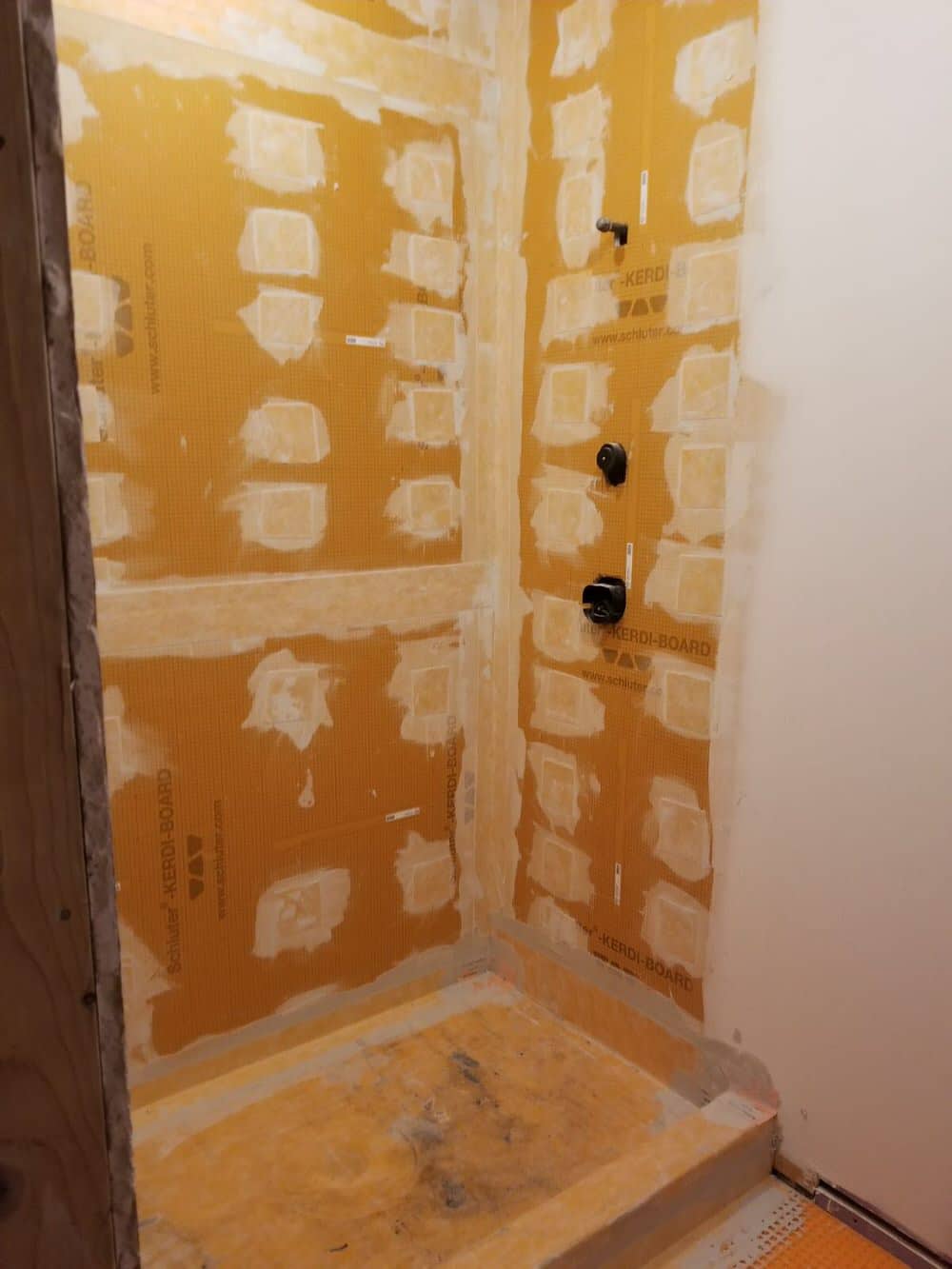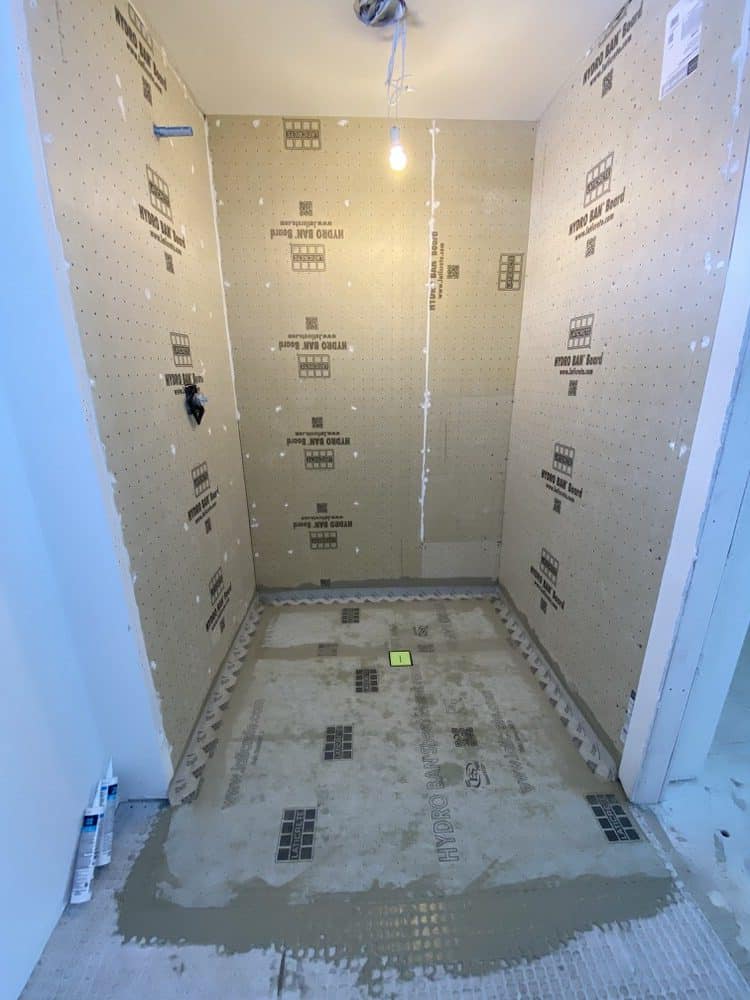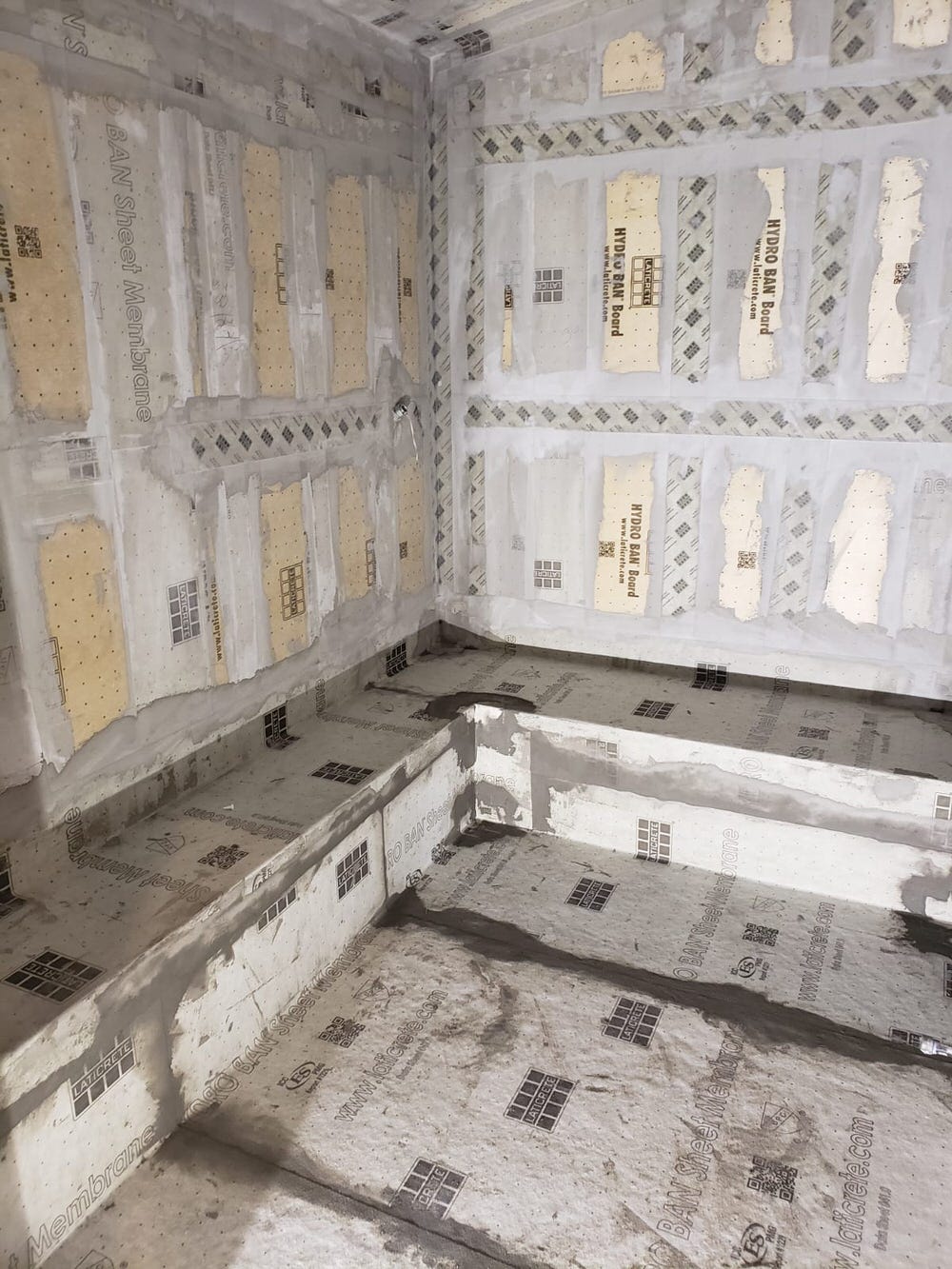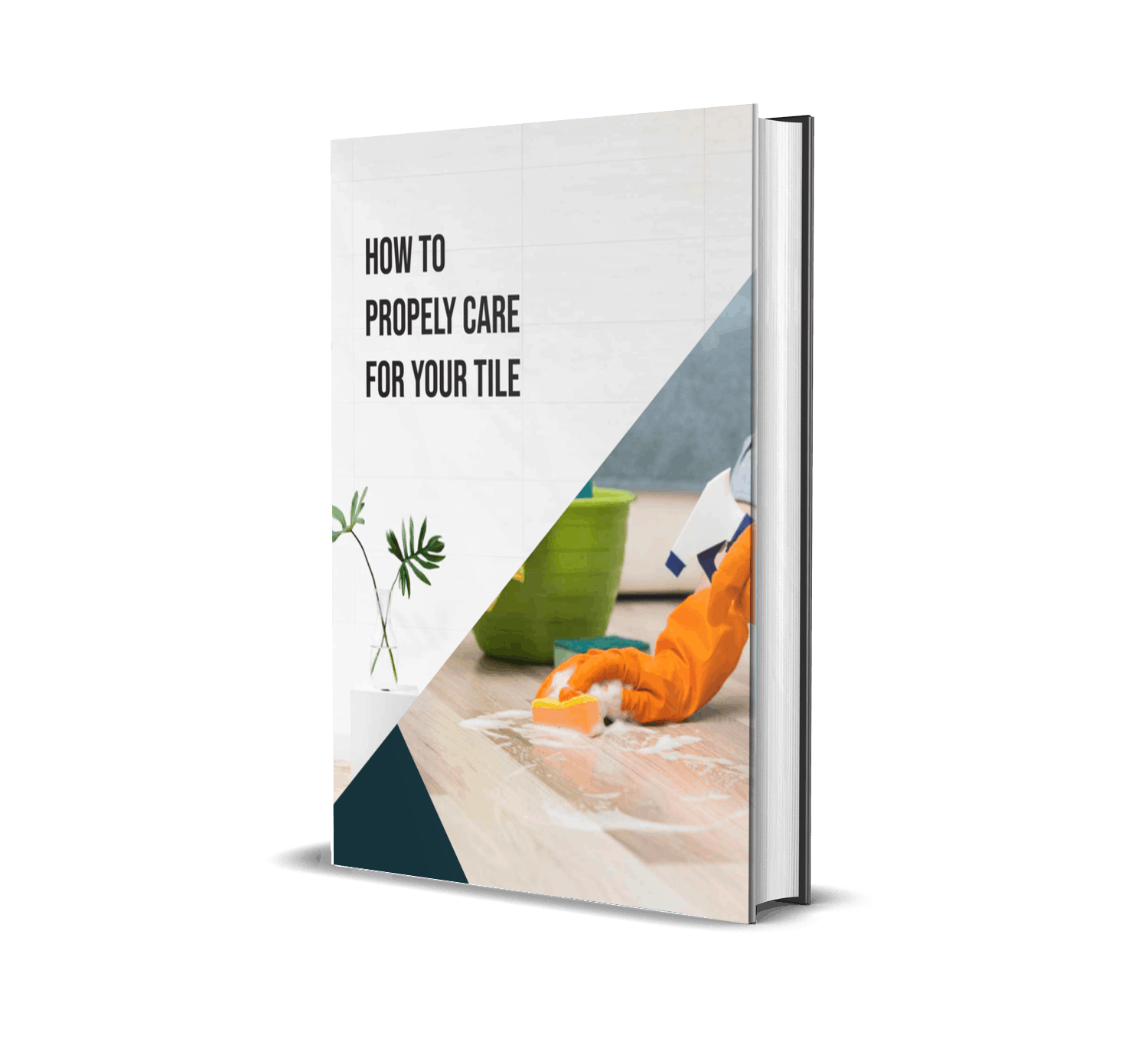Waterproofing
Do you really need to waterproof your shower?
Surprisingly many people believe that tile and grout are waterproofing. Unfortunately for far too many of our clients they find out the hard way that this is not true!
While ceramic tile is water resistant (and perfectly fine for use in water areas) and porcelain is very close to waterproof, vapor can still penetrate tile and traditional grouts allow even more water behind the tile surface.
So what happens to the water that makes it past the tile?
Well hopefully, if your contractor uses one of the approved methods lined out by the Tile Council of North America, that water will find its way to the drain and not leak inside your wall cavities or subfloor. There are several approved methods for waterproofing a shower and not to split hairs but some of the approved ways are not truly waterproof but they are vapor retardants that do a good job of assisting the vapor to make its way down the drain.
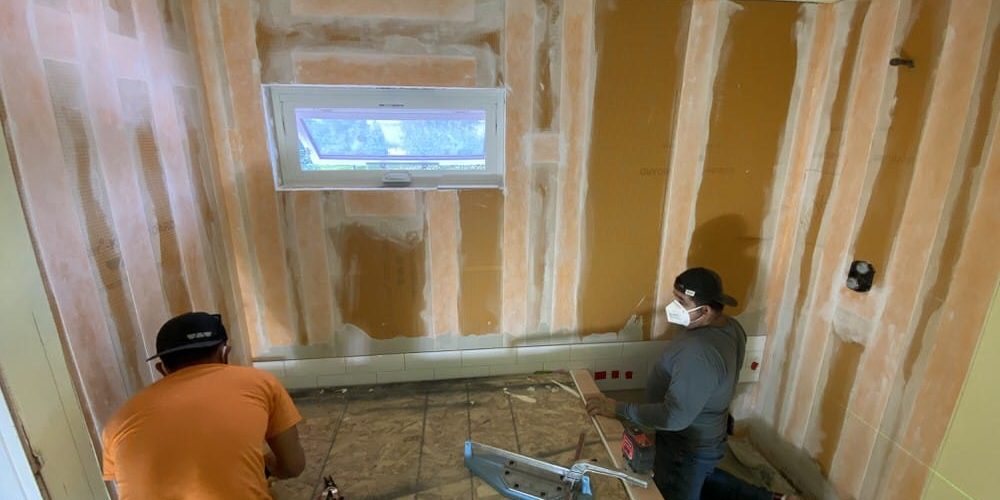
The two most popular methods of ensuring your shower does not turn into a fungal nightmare are: #1. Surface Waterproofing and #2. A Vapor Barrier. Have a look at the photo below for a visual aid. Essentially the surface waterproofing is a method of applying either a sheet membrane or a roll on waterproofing directly to the tileable surface. This method allows for the quickest drying out of your shower after use. The second method utilizes a vapor barrier behind your tileable surface. This means your shower will take longer to truly dry out between uses.
Both methods work and are time tested. There are situations where we would choose one over the other depending on tile choice, job location, budget, etc. If you are thoroughly confused at this point and would like to discuss your options further, feel free to email us to schedule a tile installation consultation.
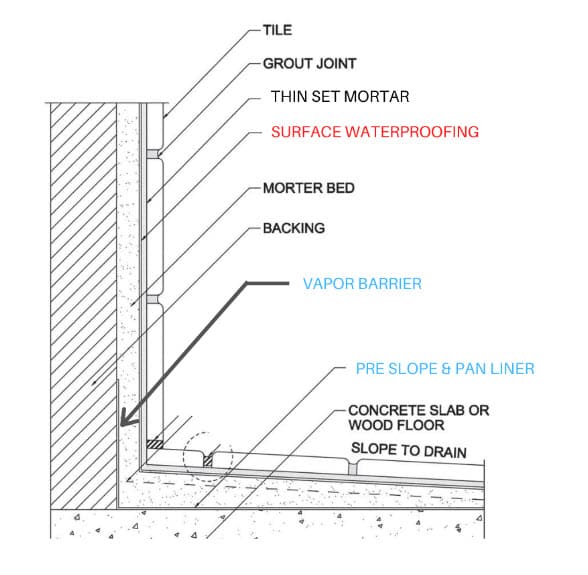
Recent Waterproofing Projects
